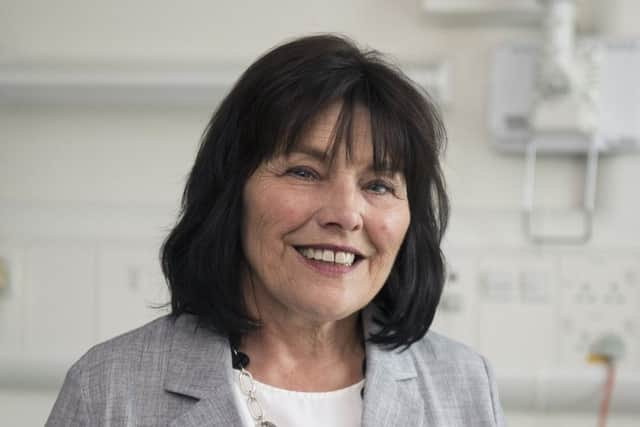New technology to get Scottish patients monitoring blood pressure from home
The Scale-Up BP initiative reduces the need for GP consultations, and can help to deliver more accurate readings.
Patients are shown how to measure their own blood pressure and text the results to an app called Florence, or Flo.


Advertisement
Hide AdAdvertisement
Hide AdTheir GP or practice nurse is then able to monitor the readings, and arrange a face-to-face appointment only when necessary.
The system has been trialled successfully at more than 150 practices throughout Scotland, with more than 10,000 patients benefitting to date.
It will now be extended to other parts of Scotland over the next two years, backed with £1.2 million of investment from the Scottish Government.
Health Secretary Jeane Freeman saw the technology first-hand during a visit to Hunter Health Centre in East Kilbride.
Ms Freeman said: “This technology brings significant benefits to patients.
“It enables them to have more control over how they manage their condition, and greatly cuts down on the number of appointments they have to attend.
“Another benefit is more accurate readings, because we know that some patients experience anxiety when attending appointments, which can lead to a temporary increase in blood pressure.
“By investing in improved technology across health and social care, we can improve patients’ experience and outcomes, and free up capacity in the system at the same time.”
Advertisement
Hide AdAdvertisement
Hide AdJulie Chambers, a patient from East Kilbride who has benefitted from the technology, said: “When I discovered I had high blood pressure, it was concerning.
“However, the prospect of having to go to a doctor’s surgery or clinic to get it regularly checked was enough to raise my blood pressure even higher!
“Between work and family I lead a very busy lifestyle.
“Being offered the use of Florence was a brilliant alternative – and I think the hassle-free nature of it, without having to commute and take time out of a busy day, probably gave a truer reflection of my day-to-day readings.”
At present measuring blood pressure is the third most common reason for attending primary care appointments in Scotland.
High blood pressure can be a major risk factor when it comes to heart attacks and strokes, which cost the NHS in Scotland an estimated £800m each year.
Earlier this month the world’s largest high blood pressure screening study revealed that just one in three people with the condition has it under control. A pioneering global initiative by the International Society of Hypertension to screen the blood pressure of as many people globally as possible managed to screen more than 1.5 million people across countries of all incomes in 2018.
Around 66 per cent of participants found to have hypertension had their condition under control, either because they were unaware, not on treatment, or both – or their treatment was not working well enough.
The Florence SMS system is currently used by around 18,000 patients in Scotland for a range of conditions and services, with hypertension management in primary care the most common use.
Advertisement
Hide AdAdvertisement
Hide AdMorag Hearty, NHS Lanarkshire telehealth manager, and national strategic lead for home and mobile health monitoring, said: “Home monitoring is a vital component of the transformation of health and care delivery.
“It can support people to feel safe and more confident in their everyday life, as well as making sure people are independent where possible.”
Scale-Up BP is part of the wider Technology Enabled Care (TEC) Programme.
Established in 2015/16 – TEC aims to accelerate the use of technology to support people to manage their health and well-being at home.
This includes patient to clinician video consultations, home and mobile health monitoring and telecare.